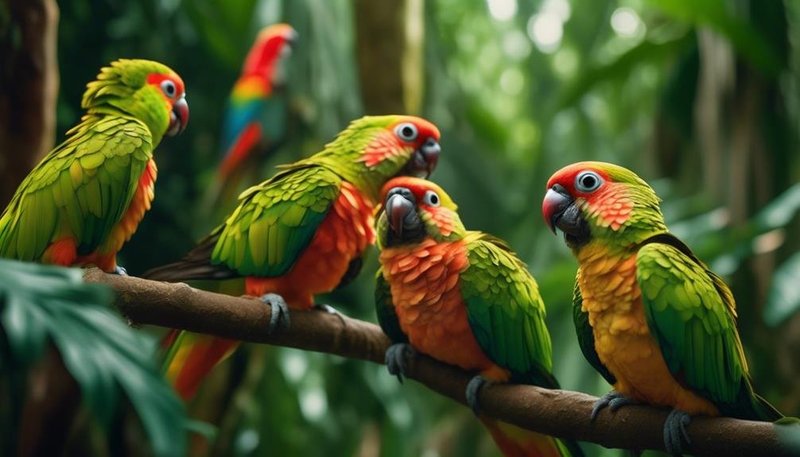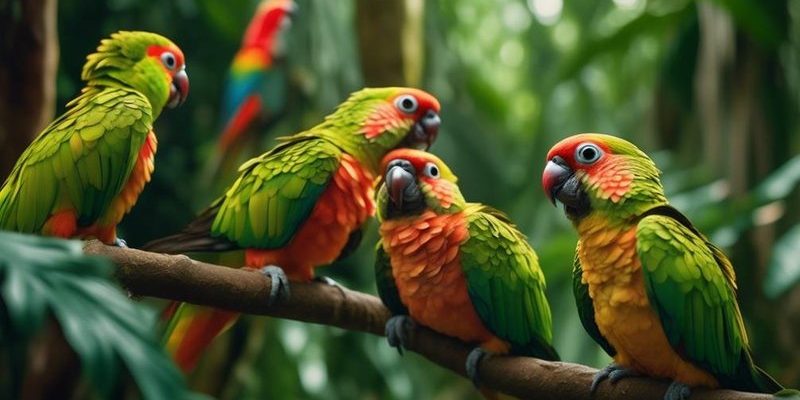
Imagine you’re sitting in a cozy café, chatting about how a simple act can create ripples of change. That’s exactly what conservation is about. It’s not just about saving a species; it’s about nurturing the entire web of life that supports us. By understanding the conservation efforts aimed at protecting conures, we can appreciate why these initiatives matter not just for the birds, but for the health of our planet as a whole.
Understanding the Conure’s Habitat
The first step to conservation is understanding where conures live. These birds are primarily found in Central and South America, thriving in tropical and subtropical forests. They enjoy the canopy, where they can find food and shelter. This habitat is essential—it’s like a bustling city filled with resources that keep conures flourishing.
Unfortunately, much of this habitat has been stripped away due to deforestation. Logging, agriculture, and urban expansion have turned their vibrant jungles into barren landscapes. Picture a colorful city being replaced by concrete and steel—it’s pretty disheartening. Without their natural homes, conures struggle to survive, leading to a decline in their populations.
Current Threats to Conures
So, what exactly are the threats facing conures? Well, they’re grappling with several major issues:
- Habitat Loss: This is the big one. As forests are cut down, conures lose places to roost and nest.
- Climate Change: Weather patterns are shifting, making it harder for conures to find food sources.
- Illegal Pet Trade: Many conures are captured and sold illegally. This not only affects wild populations but also hampers their natural behavior.
Each of these threats creates a domino effect, impacting not just conures but other wildlife too. For instance, when trees are cut down, various species that rely on them also face extinction. It’s a harsh reminder of how interconnected we all are.
Conservation Strategies for Conures
Various organizations and governments have recognized the urgency of the situation and are stepping in with conservation strategies. These efforts range from habitat preservation to community education and global awareness campaigns. Here are some notable strategies:
- Protected Areas: Establishing national parks and wildlife reserves helps secure vital habitats for conures and other wildlife.
- Reforestation Projects: Planting trees in deforested areas can restore habitats. It’s like giving nature a fresh start!
- Community Engagement: Involving local communities in conservation ensures that people understand the importance of protecting these birds.
By working on multiple fronts, conservationists can create a more sustainable future for conures.
The Role of Education in Conservation
Education is a powerful tool in the fight for conservation. Many organizations focus on educating the public about why conures need our help. Workshops, school programs, and social media campaigns are just a few ways they raise awareness.
Here’s the thing: when people understand the importance of conures in their ecosystems, they’re more likely to want to protect them. For example, a local school might adopt a nearby park and learn to identify conures, fostering a connection to their environment. This grassroots effort can spark a passion for conservation, helping create advocates for these beautiful birds.
Success Stories in Conure Conservation
There’s good news, too! Conservation efforts have led to success stories worth celebrating. For example, the Green-cheeked Conure was once on the brink of decline but has seen a resurgence thanks to habitat protection and community involvement.
In another uplifting story, a wildlife reserve in Brazil has become a sanctuary for several conure species. Here, they can thrive without the threat of habitat loss or poaching. These examples are a reminder that with concerted effort and dedication, positive change is possible.
How You Can Help
Feeling inspired? There are plenty of ways you can contribute to conservation efforts. Here are a few ideas to get started:
- Support Conservation Organizations: Donations help fund projects aimed at protecting conures and their habitats.
- Spread Awareness: Educate friends and family about the importance of conserving wildlife.
- Adopt Sustainable Practices: Whether it’s reducing plastic use or supporting eco-friendly products, every little bit helps.
You might be wondering how a single person can make a difference. Well, every effort counts! Even small actions can lead to bigger changes over time.
In the end, protecting the conure isn’t just a job for conservationists—it’s a collective responsibility. These colorful birds are part of our planet’s rich tapestry, contributing to its beauty and health. By understanding the threats they face and supporting conservation efforts, we can help ensure that future generations get to experience the joy of watching conures flit through the trees.
So next time you hear a conure’s joyful call or catch a glimpse of its vibrant feathers, remember the important role you can play in its conservation. Every step counts, and together, we can make a difference.

